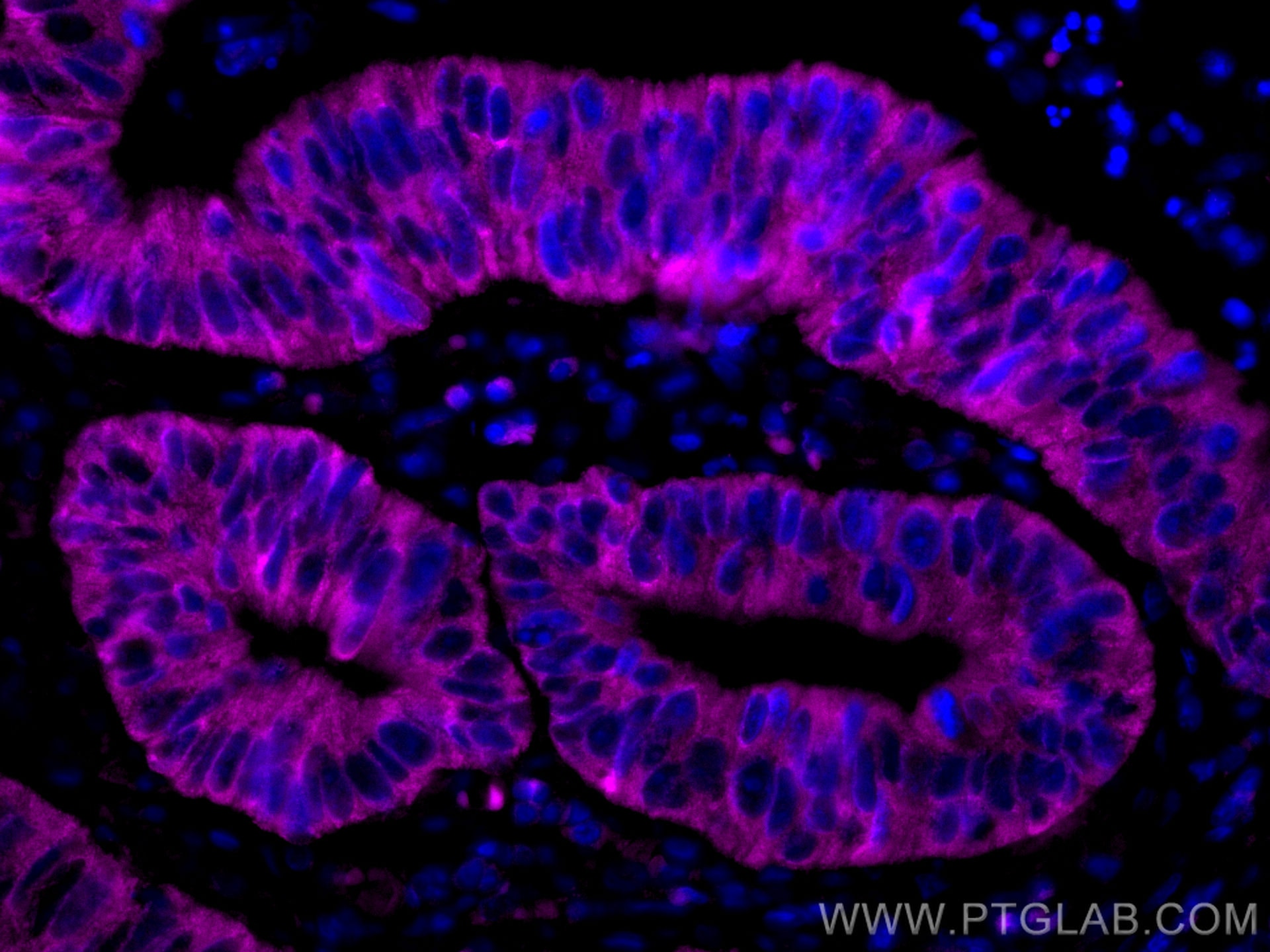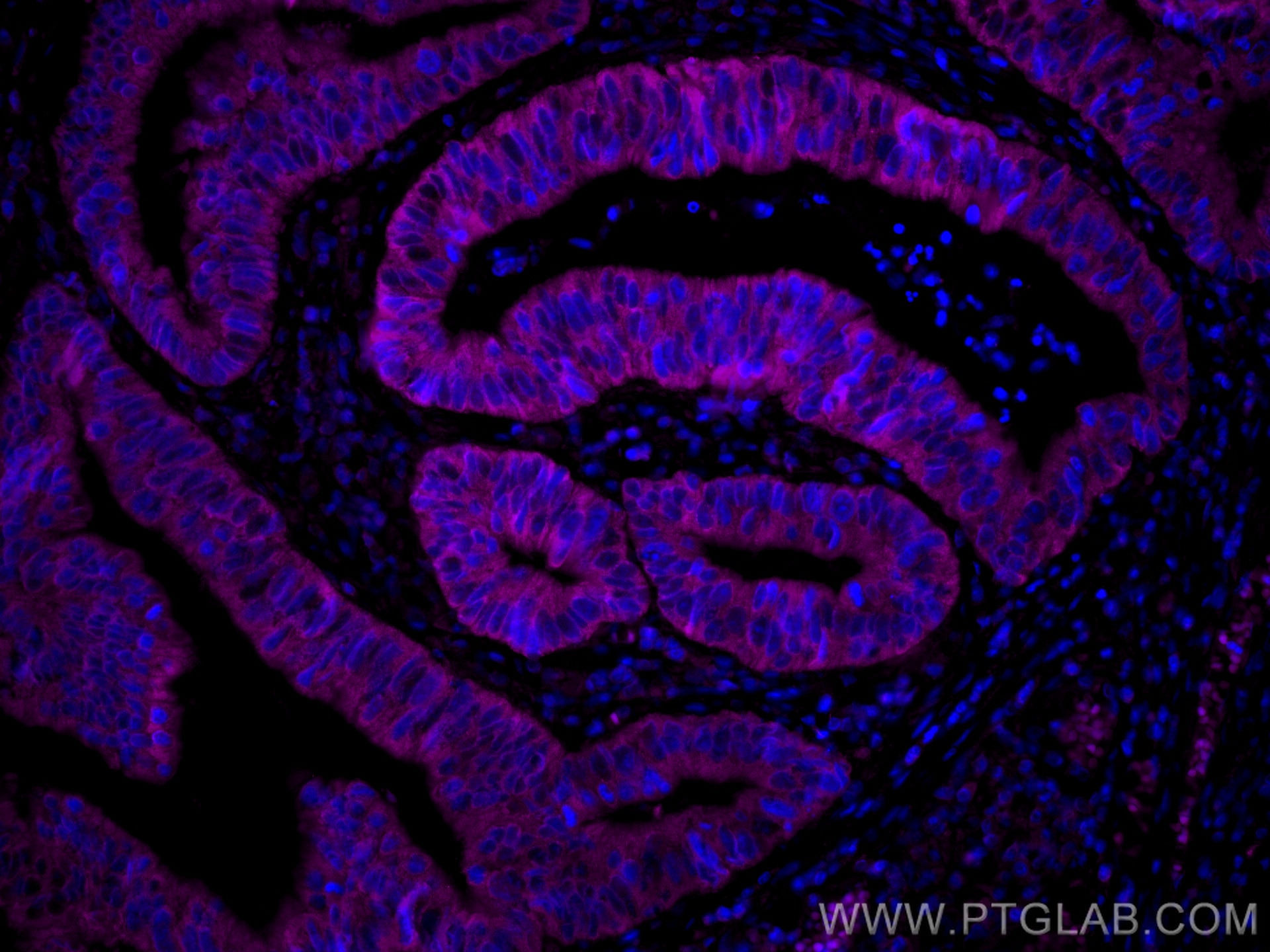- Phare
- Validé par KD/KO
Anticorps Polyclonal de lapin anti-Amphiregulin
Amphiregulin Polyclonal Antibody for IF-P
Hôte / Isotype
Lapin / IgG
Réactivité testée
Humain
Applications
IF-P
Conjugaison
CoraLite® Plus 647 Fluorescent Dye
N° de cat : CL647-16036
Synonymes
Galerie de données de validation
Applications testées
| Résultats positifs en IF-P | tissu de cancer du côlon humain, |
Dilution recommandée
| Application | Dilution |
|---|---|
| Immunofluorescence (IF)-P | IF-P : 1:50-1:500 |
| It is recommended that this reagent should be titrated in each testing system to obtain optimal results. | |
| Sample-dependent, check data in validation data gallery | |
Informations sur le produit
CL647-16036 cible Amphiregulin dans les applications de IF-P et montre une réactivité avec des échantillons Humain
| Réactivité | Humain |
| Hôte / Isotype | Lapin / IgG |
| Clonalité | Polyclonal |
| Type | Anticorps |
| Immunogène | Amphiregulin Protéine recombinante Ag8907 |
| Nom complet | amphiregulin |
| Masse moléculaire calculée | 252 aa, 28 kDa |
| Numéro d’acquisition GenBank | BC009799 |
| Symbole du gène | Amphiregulin/AREG |
| Identification du gène (NCBI) | 374 |
| Conjugaison | CoraLite® Plus 647 Fluorescent Dye |
| Excitation/Emission maxima wavelengths | 654 nm / 674 nm |
| Forme | Liquide |
| Méthode de purification | Purification par affinité contre l'antigène |
| Tampon de stockage | PBS with 50% glycerol, 0.05% Proclin300, 0.5% BSA |
| Conditions de stockage | Stocker à -20 °C. Éviter toute exposition à la lumière. Stable pendant un an après l'expédition. L'aliquotage n'est pas nécessaire pour le stockage à -20oC Les 20ul contiennent 0,1% de BSA. |
Informations générales
Amphiregulin (AREG) is one of the ligands of the epidermal growth factor receptor (EGFR). AREG plays a central role in mammary gland development and branching morphogenesis in organs and is expressed both in physiological and in cancerous tissues. The AREG protein is synthesized as a 252-amino acid transmembrane precursor, pro-AREG. At the plasma membrane, pro-AREG is subjected to sequential proteolytic cleavages within its ectodomain and is then released as the soluble AREG protein. Depending on the cell type and microenvironment, AREG can be produced in multiple cellular and mature forms using alternative pro-AREG cleavage sites and glycosylation motifs. Post-translastional modfications of 50-kDa pro-AREG produces a major soluble 43-kDa form, 28-, 26-, 16-kDa membrane anchored forms, and soluble 21-, 19-, and 9-kDa forms (PMID: 9642297).
Protocole
| Product Specific Protocols | |
|---|---|
| IF protocol for CL Plus 647 Amphiregulin antibody CL647-16036 | Download protocol |
| Standard Protocols | |
|---|---|
| Click here to view our Standard Protocols |



